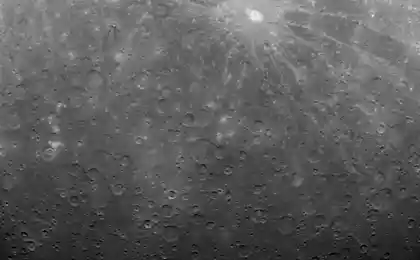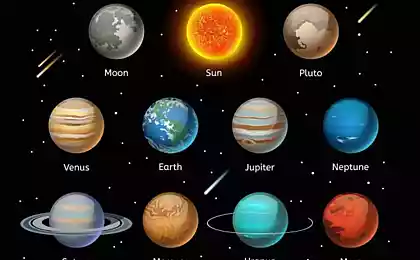1096
At the poles of Mercury discovered the ice

Despite the fact that the surface temperature can rise above 400C, some craters on Mercury poles are always in shadow, converting them into the so-called cold traps.
Previous research at the poles of Mercury, discovered by radar stations, with reflective - characteristic of ice.
Now the probe Messenger, showed that these "reflect" spots are found in shaded craters.
Messenger - a second device after Mariner-10, 1970, who visited the inner planets. Before the arrival of the satellite, large areas of the surface of Mercury has never been placed on the map.
Bright spots were detected terrestrial radio telescopes in 1990, but, as explained co-author Dr. Nancy Chabot, "before we have never had such a visual opportunity to see the surface, where they are located».
Scientists conducting surveillance radar highlights, using images of the poles of Mercury made photo MDIS instrument aboard Messenger.
"With MDIS images show that all the bright areas near the south pole of Mercury are located in areas of permanent shadow," said Dr. Chabot, Johns Hopkins University Applied Physics Laboratory (JHUAPL).
"The north pole of Mercury such sites also observed only in shaded areas, so results are consistent with the hypothesis of an ice-water».
"However, this is not proof. For many craters, ice deposits should be covered with a thin layer (10-20cm) of insulation debris to remain stable, "said Maria Zuber, one of the researchers Messenger mission of the Massachusetts Institute of Technology (MIT).
New Data Messenger-and strengthens evidence that there is something to evaporate and water ice seems likely.
"At the moment, the information obtained from the Messenger, analyzed, and unlike today -" we think that it could be, "we will soon be able to give an affirmative answer & quot ;, explained researcher at the Massachusetts Institute of Technology (MIT).
On Wednesday, scientists published the discovery that Mercury was geologically active for a long period of its history.
According to data obtained by the apparatus Messenger seen that craters on the planet's surface have been altered by some geological processes after they were formed.
Research published in the journal Science, refute long-held view of the world closest to the sun.
Scientists have also introduced a new version of the internal structure of Mercury, which involves a huge inner core of the planet enclosed in a shell of iron sulfide - a situation that is not seen on any other planet.
Messenger was launched in 2004, and reached the target orbit in March of last year. NASA recently announced that his mission will be extended until 2013.























